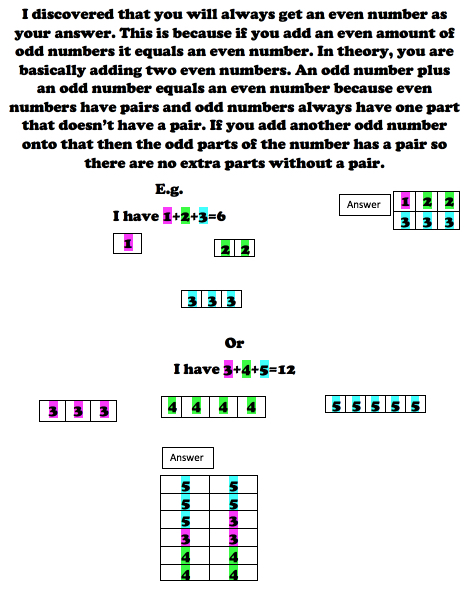Or search by topic
Number and algebra
Geometry and measure
Probability and statistics
Working mathematically
Advanced mathematics
For younger learners
Take Three Numbers



- Problem
- Getting Started
- Student Solutions
- Teachers' Resources
We had just a few submissions for this task but they all showed good understanding.
Maisie from St Mary's C of E (Aided) Primary School sent in the following;
Two odds add one even always equal an even number but two evens add an odd will always equal an odd. Three evens will always equal an odd whereas three odds will always equal an odd too. I was wondering about this last sentence - what do you think?
Evelyn from Harrison Primary School sent in this good illustration of the whole idea;

Susan from The Sacred Heart Primary School in Coventry wrote;
I know that even though I use 2 odd numbers and 1 even [3,7, 2 and 1,9,4] for both calculations they actually come up with different answers[12,14]. THE END!
Zuzanna from St Gregory's Catholic Primary School
Odd number add odd number add even number ALWAYS equals even number. For
example:
3 (odd) + 5 (odd) + 2 (even) = 10 (even).
7 + 9 + 10 = 26
1+3+2= 6
Thank you all for these contributions.
Related Collections
You may also like
Consecutive Numbers
An investigation involving adding and subtracting sets of consecutive numbers. Lots to find out, lots to explore.
Roll These Dice
Roll two red dice and a green dice. Add the two numbers on the red dice and take away the number on the green. What are all the different possible answers?

